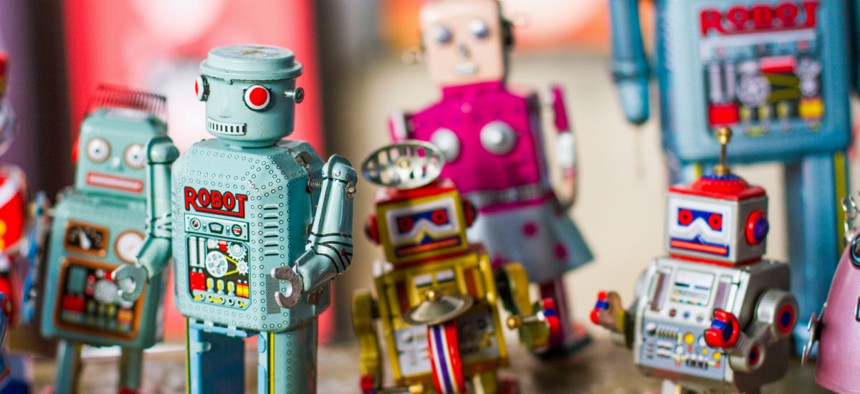Why Injecting Personality in Technology Makes People Angry

Caracarafoto/Shutterstock.com
Talking bots make people mad, product designers have found.
Technology has brought a lot of people into our lives from all over the world. So what we don’t need are more personalities, at least not in the form of machines. In fact, talking bots make people mad, product designers have found.
Elizabeth McGuane, the language expert on a product design team at Intercom, which makes messaging platforms—like the Slack chat app—argues in Tech Crunch that design should fade into the background of our lives. Bots, virtual assistants and other applications should function more like traditional tools—hammers, say—according to McGuane. Just as, ideally, we never think about the hammer handle, but use the tool, our tech implements should serve us silently and without intrusion.
“The real measure of success for today’s technology designers is to make technology disappear,” she writes.
McGuane didn’t always feel this way. In fact, she thought humans enjoyed interacting with machines. But while testing a talking bot, her design team was surprised to find that the machine’s talk irritated users, getting in the way of work.
She explains: “As the resident language expert on our product design team, naming things is part of my job. When we began iterating on a bot within our messaging product, I was prepared to brainstorm hundreds of names. Gendered, nongendered, functional, etc.”
But before the team members could alight on a perfect name, they discovered something unexpected: Nothing seemed to make humans hate the machine as much as when it spoke to them, and especially when it used a name.
In testing, the bot introduced itself to its users as if it was a person, saying, “Hi. I’m Bot, Intercom’s digital assistant.” People hated it. So, the team tried all kinds of changes, making the bot more reserved, or more friendly, using different voices and names. “But we didn’t see much change. It was only when we removed the name and took away the first person pronoun and the introduction that things started to improve. The name, more than any other factor, caused friction.”
“We learned that giving a bot an identity isn’t always for the best. Calling a bot Siri does not necessarily have the same relationship-building effect as calling your car Bessie or Old Faithful,” McGuane writes.
A big part of this is the difference between talking and typing. Talking has a humanizing effect, and according to recent research, when people hear something, they are more inclined to attribute it to a human creator. So, voice has a humanizing effect on technology.
“But what is humanizing can also be irritating. We may find it far more exhausting, as humans, to say ‘OK Google’ 75 times a day than to silently open a laptop and search,” according to McGuane.
That got McGuane thinking differently about technology design. Now, she believes we shouldn’t feel the interaction with machines at all. She says Siri and Alexa—the personalities behind Apple and Amazon’s automated personal assistants—do a decent job of staying “in the background,” but if they were even quieter, they’d be more more effective.
Designers working on language-related tech need to get better at effacing their work, McGuane argues, and making tools invisible and intuitive to use so we don’t notice them at all.
“Names and identity lift the tools on the screen to a level above intuition,” she says. “They make us see the tool in all its virtual glory, and place it in an entirely different context to the person using it—and not always a relationship that person asks for or appreciates.”


